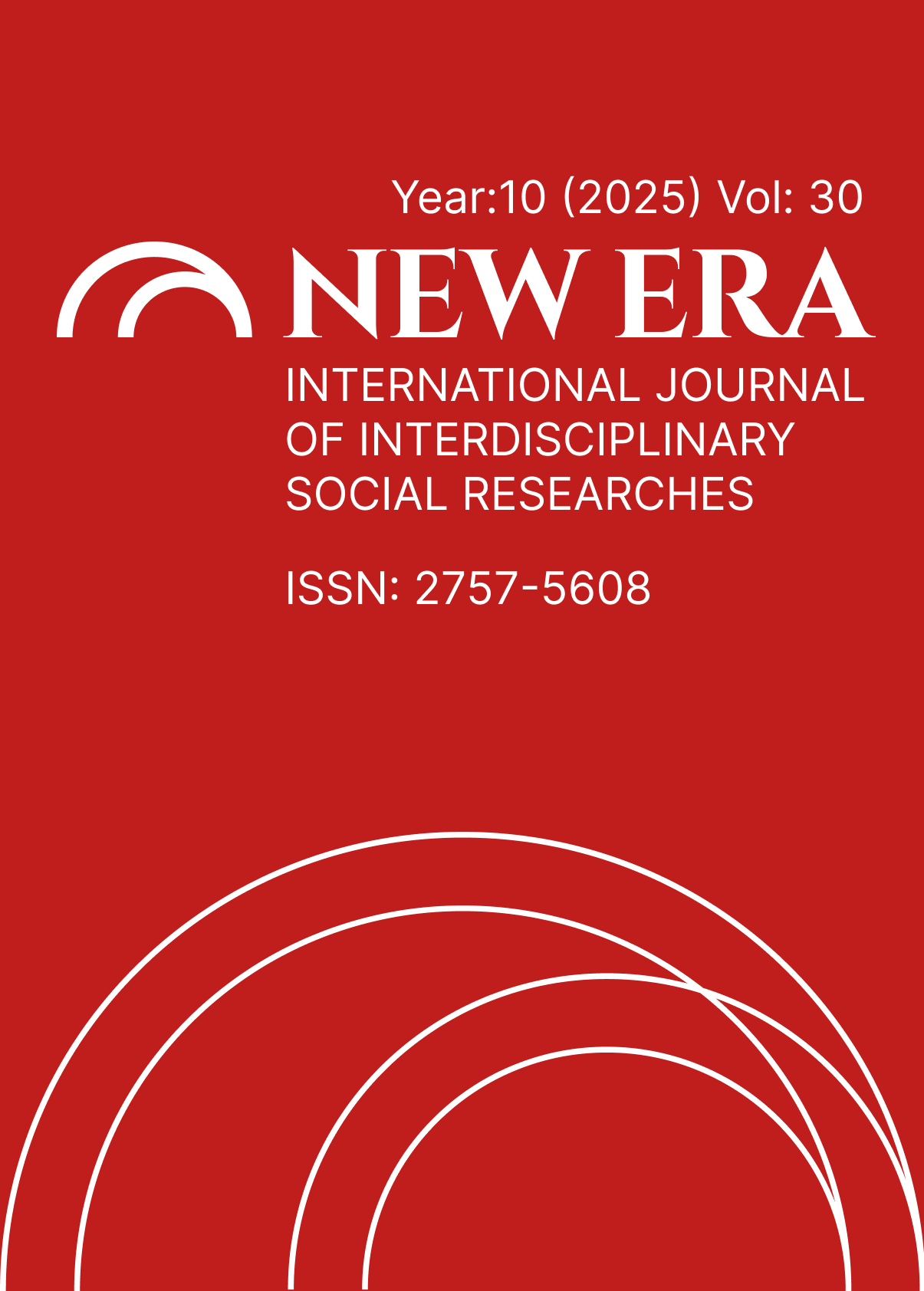THE EXISTENTIAL DIMENSIONS OF SPACE: HEIDEGGER’S CONCEPT OF SPACE AND CONTEMPORARY SPATIAL TRANSFORMATIONS
DOI:
https://doi.org/10.5281/zenodo.17392909Keywords:
Space, Dwelling, Heidegger, Existential Philosophy, IdentityAbstract
The concept of space has become a significant area of philosophical and sociological discussion in relation to individuals' identity development and psychological integrity. This study examines individuals' relationships with space through the concepts of dwelling and unheimlich (uncanniness), focusing on Heidegger’s understanding of space. The research aims to reveal the role of individuals' sense of spatial belonging in identity construction, psychological resilience, and existential well-being. The study employs the method of phenomenological textual analysis and constructs a theoretical framework based on Heidegger’s Being and Time (1927) and Building, Dwelling, Thinking (1951). The findings demonstrate that individuals' relationship with space involves not only a physical connection but also a psychological and existential bond. Particularly, contemporary spatial transformations such as forced migration, digitalization, and urbanization weaken individuals' sense of belonging, leading to identity crises and psychological adaptation problems. Within the context of Heidegger’s concept of being-in-the-world, the loss of spatial belonging brings about existential voids and identity anxieties. The results indicate that space is a critical factor in individuals' psychological well-being and identity development. Finally, Heidegger’s understanding of space provides an important theoretical framework for understanding the effects of contemporary spatial changes on individuals. While emphasizing the function of space in providing existential security for individuals, the study also highlights the need for broader future research exploring the relationship between space and identity.
References
Augé, M. (1995). Non-places: Introduction to an anthropology of supermodernity (J. Howe, Trans.). Verso.
Augé, M. (2008). An anthropology for contemporaneous worlds. Stanford University Press.
Bachelard, G. (1964). The poetics of space. Beacon Press.
Blok, A., & Farias, I. (2016). Urban cosmopolitics: Agencements, assemblies, atmospheres. Routledge.
Brown, T. (2024). Digitalization and spatial belonging: A phenomenological analysis. Journal of Urban Studies, 58(3), 210-235.
Casey, E. (1997). The fate of place: A philosophical history. University of California Press.
Cresswell, T. (2015). Place: An introduction (2nd ed.). Wiley-Blackwell.
Demirtaş, F. (2025). Mekân ve kimlik: Heidegger’in felsefi çerçevesinde aidiyet. Türk Felsefe Dergisi, 41(2), 120-145.
Elden, S. (2001). Mapping the present: Heidegger, Foucault and the project of spatial history. Continuum.
Foucault, M. (1986). Of other spaces: Utopias and heterotopias. Diacritics, 16(1), 22-27.
Gadamer, H.-G. (2004). Truth and method (J. Weinsheimer & D. G. Marshall, Trans.). Continuum.
García, L., & Patel, R. (2022). The effects of urbanization on psychological well-being. Environmental Psychology Review, 49(4), 330-355.
Giorgi, A. (2009). The descriptive phenomenological method in psychology. Duquesne University Press.
Gündoğdu, K. (2024). Zorunlu göç ve aidiyet kaybı: Varoluşsal bir analiz. Göç Çalışmaları Dergisi, 12(1), 55-75.
Harvey, D. (2006). Spaces of global capitalism: Towards a theory of uneven geographical development. Verso.
Heidegger, M. (1927). Being and time (J. Macquarrie & E. Robinson, Trans.). Harper & Row.
Heidegger, M. (1951). Building, dwelling, thinking. In Poetry, Language, Thought (A. Hofstadter, Trans.). Harper & Row.
Heidegger, M. (1971). Poetry, language, thought (A. Hofstadter, Trans.). Harper & Row.
Jansen, P., Miller, S., & Roberts, K. (2021). The loss of identity in metropolitan spaces: An empirical study. Journal of Social Psychology, 45(2), 178-200.
Lefebvre, H. (1991). The production of space (D. Nicholson-Smith, Trans.). Blackwell.
Malpas, J. (2006). Heidegger’s topology: Being, place, world. MIT Press.
Marc Augé, M. (1995). Non-places: Introduction to an anthropology of supermodernity (J. Howe, Trans.). Verso.
Massey, D. (1994). Space, place, and gender. Polity Press.
Massey, D. (2005). For space. Sage.
Merleau-Ponty, M. (1945). Phenomenology of perception (D. Landes, Trans.). Routledge.
Miller, S., & Jones, B. (2024). Virtual spaces and existential belonging: Revisiting Heidegger’s dwelling concept. Philosophy and Technology, 37(1), 50-75.
Norberg-Schulz, C. (1980). Genius loci: Towards a phenomenology of architecture. Rizzoli.
Pallasmaa, J. (2012). The eyes of the skin: Architecture and the senses (3rd ed.). Wiley.
Patel, R. (2025). Reconstructing Heidegger’s notion of dwelling in contemporary urban environments. Urban Philosophy Review, 29(3), 310-340.
Relph, E. (1976). Place and placelessness. Pion.
Seamon, D. (2018). Life takes place: Phenomenology, lifeworlds, and place-making. Routledge.
Smith, D. (2023). The weakening of spatial bonds in a globalized world. Geographical Review, 112(2), 185-210.
Thrift, N. (2008). Non-representational theory: Space, politics, affect. Routledge.
Tuan, Y.-F. (1977). Space and place: The perspective of experience. University of Minnesota Press.
Yıldırım, O. (2023). Heidegger ve Merleau-Ponty’de mekân. Türk Felsefe Dergisi, 39(1), 78-95. https://search.trdizin.gov.tr/en/yayin/detay/1282825/heidegger-ve-merleau-pontyde-mekan
Downloads
Published
How to Cite
Issue
Section
License
Copyright (c) 2025 NEW ERA INTERNATIONAL JOURNAL OF INTERDISCIPLINARY SOCIAL RESEARCHES

This work is licensed under a Creative Commons Attribution-NonCommercial 4.0 International License.


